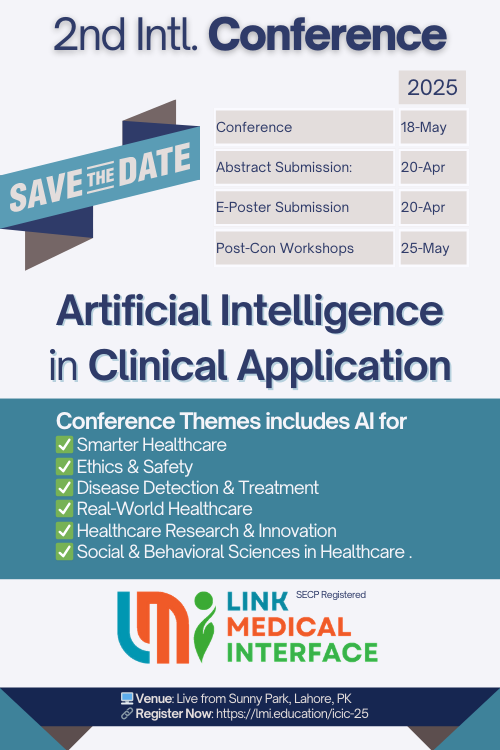Impact of Anticoagulation on Upper Gastrointestinal Bleeding in Cirrhosis
DOI:
https://doi.org/10.61919/jhrr.v4i2.883Keywords:
Anticoagulation, Cirrhosis, Child Pugh Score, SPSS, Upper Gastrointestinal Bleeding, Thrombosis, Portal HypertensionAbstract
Background: Liver cirrhosis is often associated with upper gastrointestinal bleeding (UGIB), complicating the clinical management due to the fragile hemostatic balance and potential for portal hypertension-related complications. Anticoagulation therapy, while necessary for preventing thrombotic events, may increase the risk of bleeding, making its use in cirrhotic patients a critical area of study.
Objective: To evaluate the impact of anticoagulation therapy on the incidence and severity of UGIB in patients with liver cirrhosis.
Methods: This prospective study enrolled 100 patients with liver cirrhosis at the Asian Institute of Medical Sciences (AIMS) in Hyderabad. Patients were randomly assigned into two groups: Group A (n=50), receiving anticoagulation therapy, and Group B (n=50), without anticoagulation. UGIB sources were diagnosed via upper digestive endoscopy. Data were analyzed using SPSS version 26.0.
Results: The mean age was 60.82 years (SD ± 8.98) in Group A and 62.20 years (SD ± 8.72) in Group B. Male participants comprised 68% and 62% of Groups A and B, respectively. Clinical outcomes showed shock incidence at 26% in Group A versus 12% in Group B (p=0.074), active bleeding at 30% versus 36% (p=0.523), hepatic failure at 20% versus 16% (p=0.603), and mortality rates at 16% versus 10% (p=0.372).
Conclusion: The study indicates that anticoagulation therapy does not significantly impact the likelihood of adverse clinical outcomes in patients with liver cirrhosis. However, the need to balance thrombosis prevention with bleeding risk underscores the necessity for further large-scale studies to refine anticoagulation guidelines in this population.
Downloads
References
Theocharis GJ. Changing trends in the epidemiology and clinical outcome of acute upper gastrointestinal bleeding in a defined geographical area in Greece. J Clin Gastroenterol 2008; 42:128-33.
Wolf AT, Wasan SK, Saltzman JR. Impact of anticoagulation on rebleeding following endoscopic therapy for nonvariceal upper gastrointestinal hemorrhage. Am J Gastroenterol 2007;102:290-6.
Lisman T, Caldwell SH, Burroughs AK, Northup PG, Senzolo M, Stravitz RT, et al. Hemostasis and thrombosis in patients with liver disease: the ups and downs. J Hepatol 2010;53:362-71.
Tripodi A, Anstee QM, Sogaard KK, Primignani M, Valla DC. Hypercoagulability in cirrhosis: causes and consequences. J Thromb Haemost 2011;9:1713-23.
Gulley D, Teal E, Suvannasankha A, Chalasani N, Liangpunsakul S. Deep vein thrombosis and pulmonary embolism in cirrhosis patients. Dig Dis Sci 2008;53:3012-7.
Dabbagh O, Oza A, Prakash S, Sunna R, Saettele TM. Coagulopathy does not protect against venous thromboembolism in hospitalized patients with chronic liver disease. Chest 2010;137: 1145-9.
Zocco MA, Di Stasio E, De Cristofaro R, Novi M, Ainora ME, Ponziani F, et al. Thrombotic risk factors in patients with liver cirrhosis: correlation with MELD scoring system and portal vein thrombosis development. J Hepatol 2009;51:682-9.
Tsochatzis EA, Senzolo M, Germani G, Gatt A, Burroughs AK. Systematic review: portal vein thrombosis in cirrhosis. Aliment Pharmacol Ther 2010;31:366-74.
Francoz C, Belghiti J, Vilgrain V, Sommacale D, Paradis V, Condat B, et al. Splanchnic vein thrombosis in candidates for liver transplantation: usefulness of screening and anticoagulation. Gut 2005;54:691-7.
Amitrano L, Guardascione MA, Menchise A, Martino R, Scaglione M, Giovine S, et al. Safety and efficacy of anticoagulation therapy with low molecular weight heparin for portal vein thrombosis in patients with liver cirrhosis. J Clin Gastroenterol 2010;44:448-51.
Delgado MG, Seijo S, Yepes I, Ach_ecar L, Catalina MV, Garcia-Criado A, et al. Efficacy and safety of anticoagulation on patients with cirrhosis and portal vein thrombosis. Clin Gastroenterol Hepatol 2012;10:776-83.
Garcia-Tsao G, Bosch J. Management of varices and variceal hemorrhage in cirrhosis. N Engl J Med 2010;362:823-32.
Kamath PS, Wiesner RH, Malinchoc M, Kremers W, Therneau TM, Kosberg CL, et al. A model to predict survival in patients with endstage liver disease. Hepatology 2001;33:464-70.
Heuman DM, Mihas AA, Habib A, Gilles HS, Stravitz RT, Sanyal AJ, et al. MELD-XI: a rational approach to “sickest first” liver transplantation in cirrhotic patients requiring anticoagulant therapy. Liver Transpl 2007;13:30-7.
Garcia-Tsao G, Bosch J. Management of varices and variceal hemorrhage in cirrhosis. N Engl J Med 2010;362:823-32.
de Franchis R; Baveno V Faculty. Revising consensus in portal hypertension: report of the Baveno V consensus workshop on methodology of diagnosis and therapy in portal hypertension. J Hepatol 2010;53:762-8.
Condat B, Pessione F, Hillaire S, Denninger MH, Guillin MC, Poliquin M, et al. Current outcome of portal vein thrombosis in adults: risk and Benefit of anticoagulant therapy. Gastroenterology 2001;120:490-7.
Spaander MC, Hoekstra J, Hansen BE, Van Buuren HR, Leebeek FW, Janssen HL. Anticoagulant therapy in patients with non-cirrhotic portal vein thrombosis: effect on new thrombotic events and gastrointestinal bleeding. J Thromb Haemost 2013;11:452-9.
Cerini F, Gonzalez JM, Torres F, Puente Á, Casas M, Vinaixa C, et al. Impact of anticoagulation on upper‐gastrointestinal bleeding in cirrhosis. a retrospective multicenter study. Hepatol. 2015;62(2):575-83.
Downloads
Published
How to Cite
Issue
Section
License
Copyright (c) 2024 Chandar Kumar, Salman Ali, Faiza Bibi, Adil Hassan, Sidra Soomro, Muhammad Sadik Memon

This work is licensed under a Creative Commons Attribution 4.0 International License.
Public Licensing Terms
This work is licensed under the Creative Commons Attribution 4.0 International License (CC BY 4.0). Under this license:
- You are free to share (copy and redistribute the material in any medium or format) and adapt (remix, transform, and build upon the material) for any purpose, including commercial use.
- Attribution must be given to the original author(s) and source in a manner that is reasonable and does not imply endorsement.
- No additional restrictions may be applied that conflict with the terms of this license.
For more details, visit: https://creativecommons.org/licenses/by/4.0/.






